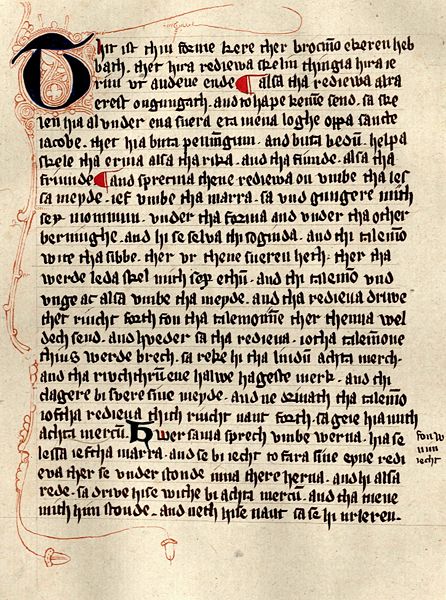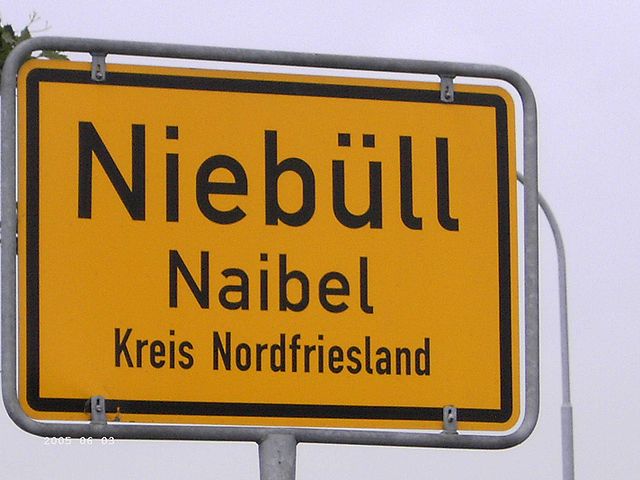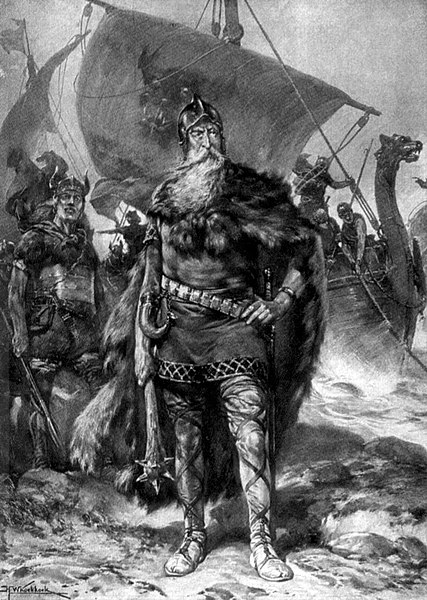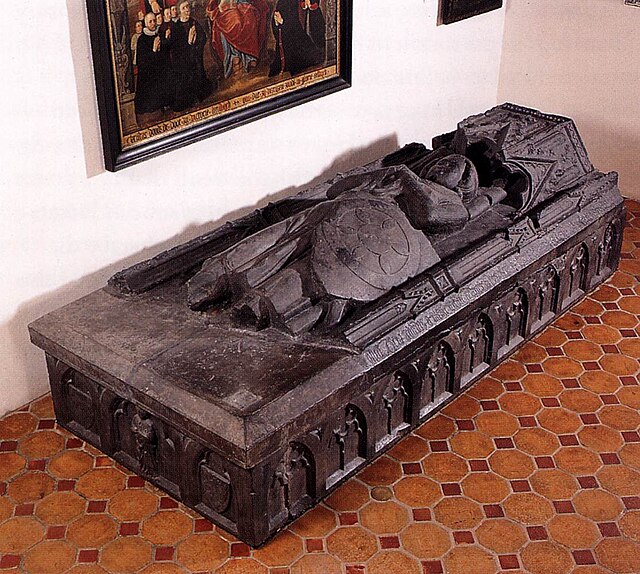The Frisian languages are a closely related group of West Germanic languages, spoken by about 400,000 Frisian people, who live on the southern fringes of the North Sea in the Netherlands and Germany. The Frisian languages are the closest living language group to the Anglic languages; the two groups make up the Anglo-Frisian languages group and together with the Low German dialects these form the North Sea Germanic languages. However, modern English and Frisian are not mutually intelligible, nor are Frisian languages intelligible among themselves, owing to independent linguistic innovations and foreign influences.
Old Frisian text from 1345
Bilingual signs Hindeloopen in Friesland (Netherlands) with the West Frisian name above and the Dutch below
Bilingual sign in Niebüll in North Frisia (Germany) with the German name above and the North Frisian name below
Bilingual sign in Ramsloh, Saterland (Germany) with the German name above and the East Frisian name below
The Netherlands, informally Holland, is a country located in northwestern Europe with overseas territories in the Caribbean. It is the largest of the four constituent countries of the Kingdom of the Netherlands. The Netherlands consists of twelve provinces; it borders Germany to the east and Belgium to the south, with a North Sea coastline to the north and west. It shares maritime borders with the United Kingdom, Germany, and Belgium. The official language is Dutch, with West Frisian as a secondary official language in the province of Friesland. Dutch, English, and Papiamento are official in the Caribbean territories.
The Netherlands in 5500 BC
Rorik of Dorestad, Viking ruler of Friesland (romantic 1912 depiction)
A medieval tomb of the Brabantian knight Arnold van der Sluijs
Charles V, Lord of the Netherlands at the Battle of Mühlberg (1547), by Titian








